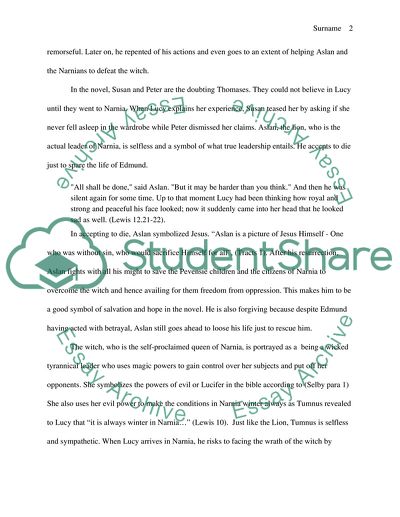Cite this document
(The Lion the Witch and the Wardrobe by Lewis Research Paper, n.d.)
The Lion the Witch and the Wardrobe by Lewis Research Paper. Retrieved from https://studentshare.org/literature/1751037-the-lion-the-witch-and-the-wardrobe-by-cs-lewis
The Lion the Witch and the Wardrobe by Lewis Research Paper. Retrieved from https://studentshare.org/literature/1751037-the-lion-the-witch-and-the-wardrobe-by-cs-lewis
(The Lion the Witch and the Wardrobe by Lewis Research Paper)
The Lion the Witch and the Wardrobe by Lewis Research Paper. https://studentshare.org/literature/1751037-the-lion-the-witch-and-the-wardrobe-by-cs-lewis.
The Lion the Witch and the Wardrobe by Lewis Research Paper. https://studentshare.org/literature/1751037-the-lion-the-witch-and-the-wardrobe-by-cs-lewis.
“The Lion the Witch and the Wardrobe by Lewis Research Paper”, n.d. https://studentshare.org/literature/1751037-the-lion-the-witch-and-the-wardrobe-by-cs-lewis.


